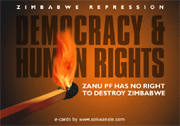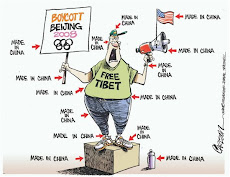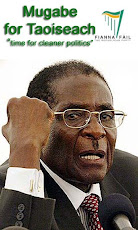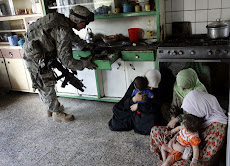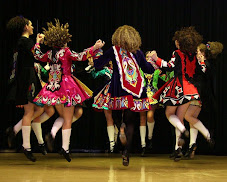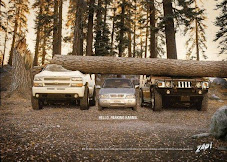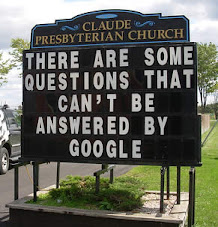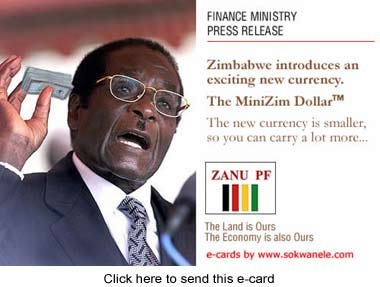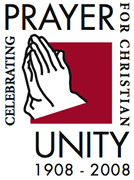
But even though my responsibilities are at an international level, the migration debate always returns to intensely personal & local concerns. What people read about in the papers is not, as much as I might like it to be, the success of the Global Forum. The stories, instead, are about how immigration is affecting our daily lives. Does it help or hurt our economy? Can our schools & hospitals handle our growing populations? Should the veil be worn in schools? How do we confront such troubling, but not illegal, cultural traditions as arranged marriages? And, at heart, underlying so many of these articles, and the conversations we have amongst ourselves, is the question: Can we all get along? We are worried about how people with very different traditions and cultures can find a way of sharing the same space. In recent years, in Ireland and in much of the West, this concern has crystallized around the question of whether multicultural policies have failed. Those who would like to bury such policies argue that we have sacrificed national identity and social cohesion at the altar of cultural correctness. Instead, they say, we should promote policies that favour assimilation. In much of Europe, as well as in Canada & Australia where multicultural policies were born—the tide has shifted: Instead of a multicultural ethic of asking what we can do for immigrants, we are now asking what newcomers must do to fit in. Integration courses & exams for residency and citizenship—often with disturbingly subjective elements that test for values & character—are proliferating throughout Europe. In France, under Mr. Sarkozy, there is now a Ministry of National Identity. The urge to recognize & parade national identity has become due to the pressures of globalization & the threat of international terrorism. Muscular monoculturalism is no longer the purview of the right—it is becoming a mainstream ideology. All these concerns lead to very difficult questions about public policy: Is the level of immigration right? Has multiculturalism helped or hindered integration? Is our sense of national identity weaker than it once was & if so, is this because of immigration or of other forces & should we be worried about this? It is this debate—what is really more of a muddle about multiculturalism, identity, assimilation, and integration—that I would like to reflect on today.
Before I go any further, I should point out that there is a great deal of confusion when we discuss multiculturalism. If you’ll allow me, I’d like to set a few terms for the debate that I believe can help us think about the issues more clearly. Firstly, What does multiculturalism mean when it comes to public policy? There are many, often competing definitions, but let me propose this one: A multicultural approach argues for policies that abet cultural recognition and thus enable the integration of ethnic minorities. Note that this isn’t the most widely accepted definition; it is simply the one that I favour. Defining multiculturalism accurately & well, is at least half the battle in peacefully settling this debate. Second, we do not have to choose between multiculturalism & integration—it is not an either or choice. As in Canada, society can create space for religious & cultural recognition, while also investing in activities that help immigrants feel & act a lot more like natives—teaching them the language, for instance & allowing them to vote in local elections. Third, multiculturalism is not necessarily an end in itself, but a means to an end. Encouraging ethnic institutions like media & native-language classes could be seen as one step in a process that leads, over a generation or two, to full integration. Fourth, we should not look to countries that—by failing to invest in any kind of immigrant-oriented policies at all—have seen separatism & ethnic ghettoes dominate their landscapes. This is not multiculturalism: this is neglect. Many western European states made little or no effort to properly integrate the first wave of immigrants who arrived in the years after the 2nd. World War, so most of these people congregated together into ghettos that were later fed by new arrivals. They are now living parallel lives supported by parallel institutions. Finally, it is vital to remember that, in thinking about multiculturalism & integration, we are not merely seeking to change immigrants—we are trying to change society as a whole. Multiculturalism can be one tool that helps to speed integration, which we should see as a convergence of all members of society in the public space, according to agreed principles.
Allow me, to make a point about integration that I will return to at the end of my remarks: The politicians who have led the backlash against multiculturalism elsewhere have, for the most part, advocated loudly for a revival of national identity—of what it means to be British or French. But I don’t believe this is really what is on the minds of most people. We do not expect all immigrants here in Ireland to dance an Irish jig or to attend Sunday mass. It is not the weakening of identity that troubles most of us. In Canada as in the UK, Germany, the Netherlands, the public outcry is against behaviour that offends democratic & civic norms that almost all Western nations have in common. If people come to our land it is entirely appropriate to insist that they adhere to our values & conform to our beliefs in human rights but this does not mean that they should not express their cultural differences in other respects.
It is worth taking a quick look back on the origins of multiculturalism. Canada, Australia, both of which are settler societies, were the pioneers in this realm. Canada, of course, was a multicultural mix of British & French settlers & aboriginals from its birth as a self-governing nation in 1867. But it was in 1971, when Pierre Trudeau declared Canada “bilingual & multicultural,” that it became self-consciously so; & in 1988, with its Canadian Multiculturalism Act, Canada became the 1st. country in the world to pass a national law of this kind. The essence of Canada’s approach is that diversity is not only tolerated but encouraged. This is reflected in policies that cover education, broadcasting, housing, health care and a myriad of other areas. The children of immigrants are given tuition in their parents' mother tongue, for example, and the city of Toronto translates all official documents into 12 languages. Broadcast media in minority languages are heavily subsidized. The policies are backed up by anti-discrimination laws that are vigorously enforced. But while Canada creates a space for minority cultures to thrive, it also affirms a core set of values and invests heavily in integration—by which I mean that it gives immigrants the tools to become fully vested members of society. The Dept. of Canadian Heritage & Multiculturalism & the Dept. of Citizenship & Immigration, fund organizations that help immigrants from the moment they arrive on Canadian soil—from finding housing to providing interpretation to job searching. All adult immigrants have access to language instruction in English or French. Meanwhile, legislation makes clear core values such as gender rights cannot be overridden in the name of cultural diversity. But, in recent years especially, there has been a backlash in Canada against its multicultural policies. This is driven in large part by a concern about national identity and whether this has been put at risk by segregated communities that have little contact with each other. A similar narrative is unfolding in Australia, which officially adopted a policy of multiculturalism in 1973. Australia, went even further than Canada by initially imagining multiculturalism as a national identity for all Australians—not just as a policy for ethnic minorities. Its multicultural policy has stood, together with a Dept. of immigration & multicultural affairs, until very recently. But the tide began to turn Down Under in the late 1990s: The Howard Government has changed the name of the government department from immigration & multicultural affairs to Immigration & Citizenship, & is emphasizing the responsibilities of migrants, including the responsibility to learn English. The government now stresses the need for shared Australian values & insists that “Australian citizenship is a privilege, not a right.” Last month, it announced it would spend A$120 million to introduce a formal citizenship test. [Though, if Rudd wins this weekend’s Australian elections, he has said he will use an almost equal amount of money to pay for adult migrant language course and job training.] In Europe, it was the UK and the Netherlands that were the first and went the furthest with multicultural policies. Here, too, the backlash has been significant. So too have the problems. More so than in the settler societies, minorities in Europe have retreated into sometimes tribal identities, demanding attention & resources for their particular patch. This is understandable for, whatever the reality & its complexity, Europeans generally believe in the fact that they live in societies that are both homogenous and in some way distinctive.
So it is clear that multiculturalism is in retreat across most of the West. But before a stake is driven into it, we should have a reckoning about the good things it has wrought. For newcomers, multicultural policies responded to an essential human need—to maintain a sense of continuity, at a moment of extreme disruption & vulnerability, by nurturing familiar institutions like media in a native language & places of worship. There are many other gains as well: Through our multicultural policies in places like the UK, Canada, & the Netherlands, we have developed, above all, the tools to fight discrimination. Our courts recognize and punish racial offence; employers think twice before rejecting minority applicants out of hand. In many places, like the UK, multicultural policies have helped create societies that are largely at ease with different races, religions & cultures. Monocultures have become cosmopolitan nations. Our attitudes towards ethnic minorities have changed and continue to do so: In the UK, a recent MORI poll found that only 25% of Britons prefer to live in an all-white area, a ratio that exceeds 40% in many European countries. Only 12% of whites would mind if a close relative married a black or Asian person; just five years ago, that figure was 33%. Our social institutions have begun to mirror the societies around us—though not nearly enough. There are more minorities in town councils, even in Parliament & in the media. Meanwhile, the integration components of multicultural policies have helped teach newcomers the native language, created schools that lead to better outcomes for the children of immigrants & eased access for them to the job market, among many other benefits. Above all, let’s remember this: Multicultural policies arose because our societies & our economies, needed immigration. So their goal was to create societies that were attractive to immigrants. If this was true in the 1970s and 1980s, it is even more true today. What we see is that countries that have espoused multiculturalism are the ones to which immigrants want to go. As the global competition for talent hots up, this will become ever more crucial.
But there also have been costs associated with our multicultural policies. Among the most troubling pitfalls of multicultural policies is that they have, in many cases, deepened geographic & cultural segregation & increased economic inequality. To put it another way, they have been more about division than diversity. Also, there is a gnawing, growing fear that our very openness, our willingness to welcome difference, is being used against us—even to harm us. Multicultural policies have been blamed by some for enabling radicalization & violent fundamentalism. But perhaps the greatest drawback of multiculturalism is that it de-emphasized the individual in favour of the group. An immigrant doctor who played the piano, volunteered to mentor teenagers & was the father of three—a man of multiple identities—instead became merely a Nigerian or a Greek or an Indian. By emphasizing ethnicity, multiculturalism tends to favour group identity. Anthony Appiah, whose book Cosmopolitanism is essential reading, wrote: “If we want to preserve a wide range of human conditions because it allows free people the best chance to make their own lives, we can't enforce diversity by trapping people within differences they long to escape. This can be especially pernicious when combined with the security concerns that have come to dominate public policy after 9/11 & 7/7. 10 yrs. ago in Europe, we thought of Egyptians & Pakistanis, Turks & Moroccans—today, we group them all as Muslims. In doing so, we also reinforce this identity. In a similar vein, while multiculturalism did an excellent job of creating space for religious & cultural expression, it did not do a good job of building bridges between these spaces of different religious & ethnic groups & thus defining a common set of standards of civility & pluralistic civic engagement. "A multicultural Canada is a great idea in principle," wrote Michael Ignatieff, "but in reality it is more like a tacit contract of mutual indifference. Communities share political & geographic space, but not necessarily religious, social or moral space.
As we try to make sense of the debate around multiculturalism, it is worth considering another vital fact: The multicultural policies that we are critiquing were designed, in most cases, for times that were very different from our own. They were also designed for a specific purpose—to help make immigrants part of our societies. The changes of the past 2 decades have been dizzying & have profound consequences for policy. Allow me to name just a few: Globalization & free trade have radically altered the structure of our economies, creating enormous wealth & opportunity—the Celtic Tiger economy owes a great deal to globalization. But globalization also places new demands on society. It asks that they become more responsive to market trends and quicker in adapting, but also making people feel less secure in their jobs. Security concerns now have pride of place in public policy, following the terrorist attacks in New York, London, Madrid. Technology Revolution: The revolution in technology has changed the way we all live, and it also has transformed how immigrants build their self-identity & relate to their countries of origin: Satellite television & the internet, as well as inexpensive air travel, allow immigrants & their families to maintain far closer ties to their original homes than ever before. Diversity: Migration flows also have changed: The number of migrants has grown of course—from about 160 million 10 years ago to well over 200 million today. But their makeup is different as well. For instance, in the UK, we have a form of super-diversification: Until recently in London, there were 10 or so ethnic groups with 10,000 or more members; today there are now 40 such groups. Small-City Migration: As important, immigrants are no longer alighting in magnet cities like London, New York, Melbourne, Los Angeles, Berlin, or Dublin. Governance: Our governance structures have also been transformed, nowhere more so than in the EU. The Union’s approach to shared sovereignty & to building a common policy infrastructure has generated enormous benefits for Member States, but it also has left many citizens feeling that their identity has been diluted & that they are less in control of their own futures. The reason I pause to consider all these changes is that we have a tendency, I believe, to lay the blame at the feet of immigrants for many problems that would have existed in the absence of immigration & that might even have been without immigration. So in the context of changing nations & a globalizing world, we have to look at our society as a whole, first, before focusing on immigrants. Globalization is not going away & we need to reinvent our social institutions to become & remain competitive.
Allow me to give you two examples of what I mean by this: First, we have to rethink our education system. If we fail to provide appropriate education & retraining, then we will face opposition to immigration—not because immigrants are taking native jobs—but because natives won’t be qualified to do jobs that our economy needs. Meanwhile, we need to make our public institutions look a lot more like the communities that they serve. We can be proud, I think, here in Ireland that our police force, An Garda Siochana, has changed its entry requirements to accept non-nationals—there are now trainees from China, Poland, Canada, Romania, and Denmark. I don’t believe any other police force in the world has done this. Brian Lenihan recently said that the Garda “must be broadly representative of the community it serves.” Our other public institutions, especially those whose employees directly serve the public, must undergo a similar transformation—our schools, our hospitals, our prisons. The public sector must lead by example.
But no matter how agile we are in adapting to the 21st century world in every other way, there is little doubt that we also must develop a new approach to, & policies for, welcoming migrants into our societies. The simple fact is migration is here to stay. Let me say, first, that in thinking about our future we need to know what is not attainable. Cultural homogeneity is no longer possible—we should not be tilting at that windmill. This is not because of immigration alone—or even primarily—but because of the revolutions in communications, transportation & commerce. Nor does it mean that our culture will weaken—in fact, the internet & globalization are tools to strengthen & spread cultures. But it does mean that, in our local communities, we cannot expect any longer to live in splendid cultural isolation. The philosopher Anthony Appiah has these reassuring words to say about this: “Cultures are made of continuities & changes and the identity of a society can survive through these changes. Societies without change aren't authentic; they're just dead.” While not being overly nostalgic about the past, we also must be unwavering in knowing what we must not give up. Multiculturalism should never be read as a theory of relativism (a subject more generally often addressed by Pope Benedict). All practices & all norms are not equal. We live in liberal democracies, which allow us unprecedented freedoms to live as we wish—this is our underlying unity. The rules that support these freedoms are sacrosanct. Practices & norms that contravene this cannot be accepted. If we lose moral consensus, as Rabbi Jonathan Sacks wrote last month, “Morality is reduced to taste…merely the good and bad about which we are free to disagree. But if there is no agreed moral truth, we cannot reason together. Lacking a shared language, we attack the arguer, not the argument.” This, I submit, would be a return to darkness. But multiculturalism, properly understood, must be part of the policy mix. Because if we rush to discard multiculturalism and replace it with a muscular sense of national identity—forcing a repressive assimilation on newcomers—we will tear our societies apart. Amartya Sen recently reminded us that the early success of multiculturalism has been linked with its attempt to integrate, not separate. The current focus on separatism is not a contribution to multicultural freedoms, but just the opposite.
As we go forward, we have to rebalance multiculturalism with vigorous policies that draw all residents of our communities—newcomers & old-timers alike—into society. The parts of multicultural policy that we should protect are those that allow & encourage all citizens to express their cultural & religious identities as equals. In the few minutes that remain, I’ll try to lay down some ideas that could guide our thinking about multiculturalism & integration: If I were to leave you with only one unifying thought, it would be this: In thinking about our future, we should pour our energy into creating shared experiences: Simply put, we cannot expect people to integrate into our societies if we are all strangers to one another. We have had a breakdown in the institutions that once brought us together—attendance at our churches has plummeted, the member rolls of labour unions have dwindled, military conscription is no longer the norm. Our media, have fragmented to the point where we inhabit our own individual media worlds—symbolized by the sight of people walking down our streets imprisoned in their iPods. One neighbour watches al-Jazeera, the other BBC or Sky or, in the US, Fox —and they develop 2 very different, often dueling, views of the world. The new technologies might unite people globally, but they risk dividing us locally. The ethnic polarization in schools throughout Europe, meanwhile, is dramatic. Where once school populations more or less represented the communities around them, now they tend to be polarized. Why should we care? The evidence shows us that greater segregation leads to lower employment, lower earnings, lower education participation. Different schools for different groups also usually leads to different quality—and so those who go to lesser schools have their prospects defined not by their own ambitions or skills, but by their ethnicity. Studies also have shown that when children don’t mix at elementary level, it becomes more difficult for them to make friendships across racial divides as they get older. The resulting tribalization is bad for our societies. So in thinking about creating shared experiences, we must start by looking at our schools—at their make-up, at their quality & at their curriculum. All of these dimensions must be suited for a diverse society. We have schools in which minorities make up the majority of students—this is the case in certain Dublin school districts; in parts of Berlin, minority representation exceeds 80 percent. Solving this might be the most vexing riddle we face, since it is tied to segregation in housing & to economic inequality, which is widening. But there are parts of the school experience that we can shape more easily. Let me point to four: Early schooling: We need to ensure access to schooling for all residents as early as age 3. Research around the world is telling us that perhaps the single most important factor in leveling the playing field for the children of newcomers is to provide language tuition at a very early age. Curriculum That Reflects Diversity: We need to make sure the curriculum, especially in social studies, reflects the diversity of our societies. Unless everyone has the same level of understanding about everyone else’s lives, we will not be able to get along in the long run. As the head of the UK Equality & Human Rights Commission, Trevor Phillips, once memorably noted, merely attending cultural festivals is not multiculturalism—it is domestic tourism. We need to rethink how we teach civics and citizenship in our schools. We can no longer approach this task passively. We have to train children not only in how their societies are run, but also how to think freely. Democrats are made, not born. Finally, we must eliminate any & all forms of bias in entry to higher education. Throughout much of the West, ethnic minorities are underrepresented—and this underrepresentation is not the result of ability.
In France, active recruitment in minority neighbourhoods & less culturally biased application procedures have made a remarkable difference in driving up minority enrolment. Meanwhile, shared experiences in education need not only happen in schoolhouses during the school year. We should invest in experiments that bring children together in camps during the summertime. While schooling is the sine qua non of creating a cohesive society, politics is almost equally important. It is through politics that a society’s laws, norms, and traditions evolve; unless newcomers are drawn with relative speed into the political arena, our norms & traditions will not evolve to reflect today’s society—and newcomers will feel increasingly alienated. So it is vital that we find ways to give immigrants a political voice. Already, 9 EU countries offer the vote in local elections to non-citizens. There are more immediate ways as well to bring immigrants into the political process—political parties could, for instance, actively seek members in ethnic neighbourhoods. Here in Ireland, Rotimi Adebari’s election as mayor of Portlaoise in June marked a real watershed. But we should not underestimate how difficult this will be: Even in cities considered to be immigration success stories, political hurdles are hard to clear. In Toronto, where almost half the population is foreign born, only 3 of 44 councillors belong to an ethnic minority. Political incorporation will take a conscious effort on the part of immigrants as well; they will have to make a pro-active choice to become Irish or Italian or French. I think, though, that one columnist in a Canadian paper put it best: “We have been too concerned about making Canada than about making Canadians. But please stop blaming the immigrants. We are ready to become Canadian citizens, just tell us what to do.” The 3rd pillar of cohesion is the job market. There is nothing more subversive to a person’s sense of self-worth than long-term unemployment. Having too many newcomers on social security, meanwhile, is one of the main drivers of anti-immigrant sentiment. Outside of school, the workplace is where social relationships across racial, religious & ethnic boundaries are most likely to be formed. So we must invest heavily in ensuring fair & equal access to employment for immigrants & their families as soon after they arrive as possible. At the moment, as far as I know, this is not a substantial problem here but that may be because we have virtually full employment. Fourth, we must strive to ensure that, once we decide to welcome newcomers on a permanent basis, that we give them a clear path to citizenship. We should certainly expect them to meet a reasonable set of responsibilities in common with all other citizens before they are naturalized. But we should not ask them to clear hurdles that are either too subjective or biased. There is much else we must consider as we move forward. One vexing issue is for us to be able to gauge the capacity of our societies to integrate immigrants & if we are exceeding it with the current rate of migration flows. We must be smart in calibrating the two; otherwise, the speed of change will sow discontent throughout society. Also, we must not budge on the question of our laws—religious & cultural practices that infringe on our laws have no place in a liberal democracy. At the same, we must continue to be relentless in enforcing anti-discrimination legislation. The multicultural policies of the past worked—in their time and in their places. Where they were pursued & properly financed, they led to societies that generally are more just, more attractive to newcomers & better able to compete in the modern world. Our experience with multiculturalism over the past 35 years is certainly not a failure, as some argue. But the times & the world have changed. So we need to create a new balance, a golden mean between monocultural assimilation & a multiculturalism that rejects a common culture. Above all, we must emphasize & invest in, what unites us. And while we must insist that all newcomers respect our laws & civic norms, we also must fiercely defend their right to express themselves. National identity is a dynamic process for which we should set the rules of the game by which norms evolve, rather than to try to establish fixed values. We cannot say that a country’s identity is X, & will forever remain so. We have to learn that our identity has to be adapted to recognize that we are becoming, and will be, a society with others in it. It is a big challenge. And no amount of talking about the undoubted economic benefits to us, as well as to migrants, can overcome this fact. We have a challenge to change people's mentality. It's a European challenge. Eratosthenes of Cyrene composed in his old age a philosophical treatise, of which only a few fragments remain.
In closing, I would like to share one that is particularly relevant to our debate: “The author,” Eratosthenes writes, “rejects the principle of a twofold division of the human race between Greeks & Barbarians & disapproves of the advice given to Alexander, that he treat all Greeks as friends & all Barbarians as enemies. It is better, he writes, to employ as a division criteria the qualities of virtue and dishonesty. Many Greeks are dishonest & many Barbarians enjoy a refined civilization, such as the people of India or the Aryans, or the Romans & the Carthaginians.” The great contribution of Christianity to our identity as Europeans is grounded upon the essential principles of the dignity of man & the equality of man. These remain the essential cornerstones for our responses to this particular issue.
+++++++++++++++++++++++++++++++++++++++++++++++++++
Disclaimer
No responsibility or liability shall attach itself to either myself or to the blogspot ‘Mozlink’ for any or all of the articles/images placed here. The placing of an article does not necessarily imply that I agree or accept the contents of the article as being necessarily factual in theology, dogma or otherwise.
Mozlink

















